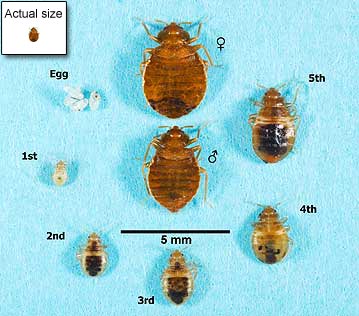There are basically 5 different methods of determining if the bed bug treatment was effective – rely on the tenant to tell you, randomly placed glueboards folded into triangles, climb up interceptors under bed legs, glueboards under the bed legs, and various contraptions that emit co2 and heat to bait and trap bed bugs. Lets go through each of these in order.
The least reliable method of determining if the bugs are really gone is to rely on the tenant to tell you that the bugs are gone. Firstly about 1/3 of the human population will not react to bed bug bites and do not realize they have bed bugs. Secondly, and it is a mystery to me, tenants will sometimes lie about their bed bugs because they do not wish to be disturbed with an extermination procedure or do not want to incur any extra cost such as laundry etc.. All told, relying on tenants to tell you about bed bugs is a sure fire method of filling multi family complexes with bed bugs.
The randomly placed glue board folded into a triangle is another ineffective tool though it is better than relying on the tenant. Very few bugs are caught in these traps because the glue board occupies a very small percentage of the floor area and the traps rely on random trapping. The traps also have very little glue actually exposed for the bug to walk on decreasing the effectiveness even further (A more effective use of the glue board is to leave them flat. This increases the surface area on which the bugs are caught by a factor of 3). If I note a bug on one of these traps the infestation can be found within a few seconds by inspecting the bed because the infestation is then quite advanced. If these traps are placed under the sleeping surfaces the odds of catching them are increased because the bugs are attracted to the bed but they still remain, with a few exceptions, ineffective.
Climb up interceptors, properly used in conjunction with an exterminator’s treatment are very effective despite the bed bug’s penchant for being repelled by slippery edge pit fall traps. We actually train caretaker’s to monitor entire buildings with these devices. These devices fall short when the tenant refuses to cooperate, which happens more often than you care to contemplate. When the beds are shoved against the wall, blankets touch the ground, or the tenant refuses to buy a bed with legs the bugs are simply repelled by the interceptors and they find an easier method up to the tenant. The bug then returns to the hidden harbourage after feeding.
Glueboards under the bed legs are my favourite monitor because they repel bugs less frequently than the interceptors. You can make your own glue board trap by sticking an empty tuna can into the middle of a glue board. Place bed leg into the tuna can and you have an excellent trap. We prefer to use the “trapper max” brand but there may be other brands equally effective (I have not bothered to research which ones work – though I have noted some brands are definitely inferior). If you use these devices properly they work better than the climb up interceptor but they do get dirty and need to be replaced more often. On the other hand they are dirt cheap and they work better than Interceptors – especially when the tenant refuses to isolate the bed properly. In a typical suite I suggest that once you have gone 6 consecutive weeks with catching zero bugs I would declare you bug free. That also assumes none of your neighbors have bugs. As long as a neighbour has bugs you must keep the monitoring process in place even if you yourself have no activity. Also if the tenant refuses to cooperate I would monitor much longer.
And lastly the co2/heat contraptions. You can purchase these ready made machines for a very large sum of money or you can fill a few insulated cups with dry ice and place them on glueboards, put a smelly sock on the cup and put a couple chemical hand warmers on the sock and it is roughly equivalent to the really expensive contraptions. In fact these home made devices might be even better because they, depending on the size of the cup, sublimate more co2. In the end, however, I have found that a real live tenant is much better bait than these contraptions and tenants emit free co2, heat, and smelly sock smells. The only place these devices make any sense at all is in empty suites and even then they are a poor second best.
Personally I oscillate between the interceptors and the glueboards depending on the context – with the glueboards being my favourite. One of my landlord customers has shifted to a home made covered glueboard monitor and finds them much more effective than interceptors.
